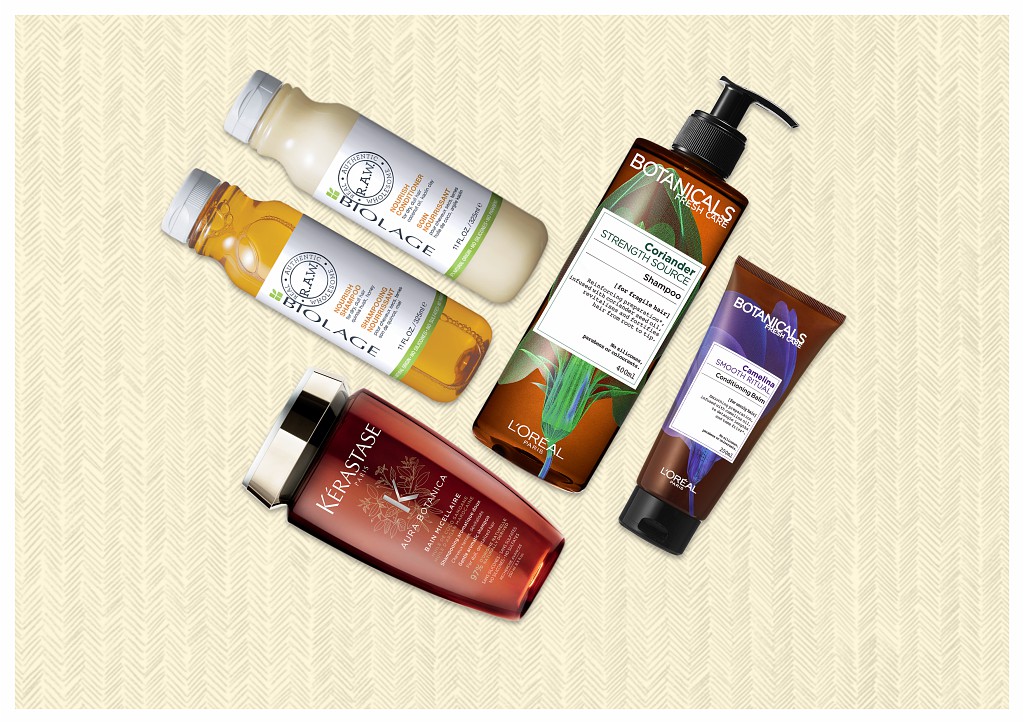THE KEY: RECYCLED PLASTIC PACKAGING
Our houses are overflowing with plastic packaging, especially in our bathrooms. Because the production of plastics causes pollution, is costly in terms of energy, and progressively depletes non-renewable natural resources, it’s time we think about packaging differently. In a more eco-friendly and overall more responsible way. And that is what L’Oréal France has decided to do with some of its products by using recycled plastic. L’Oréal is indeed committed to ensuring that by 2025, 50% of the plastic used in packaging will either be recycled or bio-sourced.
L’ORÉAL AND THE SPOT TOOL
L’Oréal has been committed to sustainable development for many years, having launched the “Sharing Beauty With All” program in 2013 with a clear goal in mind by 2020: to eco-design its packaging, taking into account the distribution, the manufacturing process, and the sourcing of the ingredients it contains. And it’s at the heart of this values program that L’Oréal’s revolutionary tool, SPOT (Sustainable Product Optimisation Tool), originated. SPOT is an innovative gem that was developed by three L’Oréal teams (sustainable development, packaging, and research). It can measure the social and environmental impact of all the Group’s products. By quantifying the social and environmental impact of a product throughout its life cycle, SPOT can be used to eco-design L’Oréal products most responsibly.
WHAT THE BRANDS ARE DOING CONCRETELY
But then, in concrete terms, what are the brands doing for you, for our planet, and how do they make their products more responsible? Well, L’Oréal’s brands have implemented three major changes in the production of their products, giving rise to a new era of packaging.
L’Oréal is committed to improving the environmental and social profile of 100% of its products. 58% of our new or renovated products in 2018 show a reduced environmental footprint for their packaging.
As early as 2007, L’Oréal launched a packaging optimization policy based on 3 pillars:
1. Respecting consumer safety, health, and biodiversity:
o for example, 100% of the plastics which are in contact with the formulation are food-grade;
o zero PVC: 100% of the PVC has been eliminated from the packaging.
2. Reducing the weight and size of the packaging or eliminating it altogether, and promoting rechargeable or refillable systems, or multi-doses to replace mono-doses.
3. Replacing some materials with less impactful materials by:
o promoting a circular economy, using post-consumption recycled (PCR) materials and encouraging consumers to recycle,
o using renewable materials such as bio-sourced plastics.
All the actions undertaken helped avoid the consumption of 8,705 tons of virgin materials in 2018, a figure that increased by 19% since 2017. This progress is primarily the result of the efforts made to integrate recycled materials into the plastic of our packaging (+38% since 2017).
Examples
Because designing packaging made from recycled plastic is one of L’Oréal’s major commitments, the bottles of the Garnier Bio brand are made from 100% recycled PET; at L’Oréal Paris, all the skincare glass jars (Revitalift, Age Perfect) contain 25% recycled glass. As for Biolage Raw, all the containers are recyclable and made from recycled materials!
Brands have reduced the weight of a lot of their packagings, such as Sanoflore (glass jars went from 131g to 117g), L’Oréal Paris (lighter packaging of the Elnett hair spray), Frank PROVOST (-43% aluminum in the newest hair sprays), the MIXA body lotions (saving 1 or 1.5 grams on plastic bottles of 400 or 250 ml), Garnier (the Fructis product now weighs only 18.5g compared with 24g previously), and many more, so the L’Oréal Group has already saved 5,500 tons of packaging materials between 2008 and 2018!
Because environmental responsibility also depends on reusing existing materials, L’Oréal has decided to offer rechargeable packaging. This applies in particular to the Lancôme jars, to the L’Oréal Professionnel’s Source Essentielle product line, and the new Or Rouge by YSL.
By 2020, 100% of new or renovated L’Oréal products will have improved their environmental and social profile (already 79% of new or renovated products in 2018 show an improved environmental or social profile).
And by 2025, 100% of L’Oréal’s plastic packaging will be rechargeable, reusable, recyclable, or compostable. This measure will significantly reduce the use of fossil energies and foster a circular economy.

